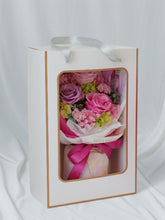Caring for your Whale Fin Plant (Sansevieria Masonania)



You're probably not a stranger to the Sansevieria, otherwise known as the Snake Plant. While there are a whole lot of Snake Plants out there - there's the black and gold Sansevieria, Sansevieria Moonshine, Sansevieria Futura Superba, Sansevieria Trifasciata Golden Hahnii, Sanseveria Trifasciata, Sansevieria Hahnii Rosette, Sansevieria Bantel’s Sensation, etc - the one with the largest leaves is the Whale Fin Sansevieria Masonania. It's not a common variety to come by, making it a treasured plant in any home gardener's collection.
It's a great way to have a 'rare' plant your collection if you're a plant beginner as it's adaptable to a wide range of conditions, and sometimes even thrive in neglect. Sansevierias are also noted for their air-purifying properties (as certified by NASA!).
While they make great indoor plants, Whale Fins (in fact, this applies to all Sansevierias) are toxic to pets and humans when ingested, and will likely cause stomach upset or vomiting. However, as long as your pets don't have the tendency to bite your plants, all's good.

Sunlight
Whale Fins originate from Central Africa and can be seen growing in the shade of trees, and sometimes even in direct sunlight. They do best in moderate to bright indirect light, but can also tolerate low light conditions and direct sunlight. If ample sunlight is provided, your Whale Fin will grow faster and you'll have to divide it or repot it into a larger pot.
The most sustainable place for you to place your Whale Fin is by a large window with plenty of indirect light, and if outdoors, somewhere where there will be shade during certain times of the day.
Watering
Water your Whale Fin sparingly (only when the soil is dry) and avoid watering onto its leaves. Make sure your pot has drainage holes!
Over-watering is a common problem amongst Sansevieria owners, and can cause root rot to happen. In fact, over-watering is practically the only thing that will kill any Sansevieria.
Soil medium
Whale Fins prefer sandier, loose and well-draining soil. You can also just go for a cactus potting medium.
Fertiliser
It's not necessary to fertilise your Whale Fin but if you want to give it a treat, you can fertilise it every 6 months with a general plant fertiliser.
Temperature
Whale Fins prefer warmer conditions, but will definitely still do well in your air-conditioned room or office.
Propagating
Compared to other kinds of Sansevierias, your Whale Fin is a much slower growing plant. Hence, propagating it will require a lot of patience and you're unlikely to have a jungle of Whale Fins in a short span of time. The best way to propagate it would be to simply wait for pups to appear, then dividing and potting them when they're large enough to be planted.
You can divide Sansevieria easily when repotting, if not emerging new shoots can be taken out and potted independently. You can repot Sansevierias by cutting, but this is a more complicated process that requires multiple steps. You can watch a video on how to propagate them here.
While you may want to put them into beautiful pots around your home, it's important to make sure that the pot allows for unobstructed draining. A tip is to pot them into a simple and functional pot before placing them in more decorative holders, such as a Japanese ceramic pot or hand-woven basket.



Troubleshooting
Roots turning mushy, followed by leaves wilting, drooping and turning yellow and mushy: Over-watering which caused root rot! When observed in the leaves, the plant is almost entirely endangered. Once detected, immediately repot and remove affected roots and leaves with clean, sterile tools. If this is not done in time, you may have to salvage via leaf-cutting instead. Sterilise the tools immediately after this is done.
-
Ready to add the rare Whale Fin to your plant collection? You can get one here.







 Singapore
Singapore
 Japan
Japan
 Australia
Australia
 Malaysia
Malaysia
 Indonesia
Indonesia
 EU
EU










